You can contact LEARNZ, part of CORE Education, at:
Postal Address:
PO Box 13 678,
Christchurch 8141,
New Zealand

Watch Shelley's diary cam video.
Kia ora koutou,
You were determined to make the most of your final day of the Waterview Connection field trip despite the rain. Luckily the plan was to spend most of the day underground.
More cars mean more roads
Before heading out into the tunnels you had to complete the last field trip audioconference. Ewart Barnsley was your expert and you may recognise him from when he used to be a reporter for TVNZ. Ewart has been to some interesting places, including Iraq, so it was great to hear some of his work stories. St Peter’s School from Beckenham in Christchurch were curious about what impact the Waterview Connection Project would have on traffic. Ewart explained that lots of research has been done and models prepared to better predict what traffic will be like in the future. This has allowed the Waterview Connection to be designed to meet future demands. You can find out more by listening to the recorded audioconference. I was really surprised to hear that Auckland is growing so quickly that there are about 2,500 more cars on the road every month. No wonder big projects like the just announced City Rail Link are going ahead. You could find out more about his project.
Tunnel tour
Ewart had promised to take you on a full trip through one of the Waterview tunnels so you put on all your safety gear and headed out. The rain had set in, so it was nice to sit inside the van and drive to the southern end of the tunnels. Before heading underground, you had to ‘tag in’ so workers knew that you were in the tunnel. There are strict speed limits in the tunnel so you had plenty of time to see the main features of the tunnel. Ewart talked about all the safety systems, ventilation fans and even how the tunnels are painted. You can watch the video about this.
The walls of the tunnels are being painted a creamy colour, while the roof has been painted black. The black roof helps to draw the eye of drivers towards the road rather than the roof and is less disorientating. You may remember from the first field trip how weird it was walking through the tunnel when it was just a round tunnel with no road at the bottom, so you can understand why it’s important to make the tunnel feel less tube like.
Safe Driving
The Waterview tunnels will be the longest road tunnels in New Zealand and something that drivers are not used to. It will be important for drivers to follow signs and learn how to use the tunnels safely. The road inside each tunnel is three lanes wide but drivers need to try and change lanes early so traffic runs smoothly through the tunnel. There will be an 80 kilometre per hour speed limit in the tunnel. Only motorised traffic can enter the tunnel so you won’t be able to bike or skateboard through the tunnel. Any trucks with dangerous chemicals on board will not be able to travel through the tunnel either. Like any motorway no one will be allowed to stop on the road unless there is an emergency. Before the tunnels open to the public there will be careful testing of all the electrical and mechanical systems and an education programme will be shared to help drivers learn how to use the tunnels safely.
Why build the Waterview Connection?
It was interesting to hear Ewart talk about how the Waterview Connection will help not only Auckland but all of New Zealand. It will speed up traffic and make it easier for things to be transported across Auckland, which saves us all money. Waterview Connection completes the Western Ring Route and offers an alternative to State Highway 1. I know I’m looking forward to being able to drive from the airport into town without having to negotiate traffic lights. Watch the video to learn more.
Tunnel Maintenance
Before heading out of the tunnels you were met by Emilio Marguez who is the Tunnel Operations Manager. Emilio talked to you about how the tunnels will be maintained. Electronic signs will set speed limits and show where lane closures are. It will be possible to close certain lanes to allow maintenance work to be done and cameras will operate 24/7 to monitor the tunnels. If there is an accident in the tunnel people will see this in the Auckland Traffic Operations Centre and be able to close lanes or parts of the tunnel. It was amazing to hear about how clever the monitoring technology is. It will be possible for tunnel operators to give messages to drivers through their radios if they have their car radio switched on while in the tunnel. There will also be a PA (Public Announcement) system in the tunnels. You can find out more by watching the video.
It’s hard to believe that the Waterview Connection is almost finished and how much has been done since our first field trip in 2014. It has been a privilege to meet so many different people throughout the three field trips and see how New Zealand’s largest road project has been put together. I hope you have enjoyed the journey!
See you on another field trip soon,
Shelley the LEARNZ field trip teacher.
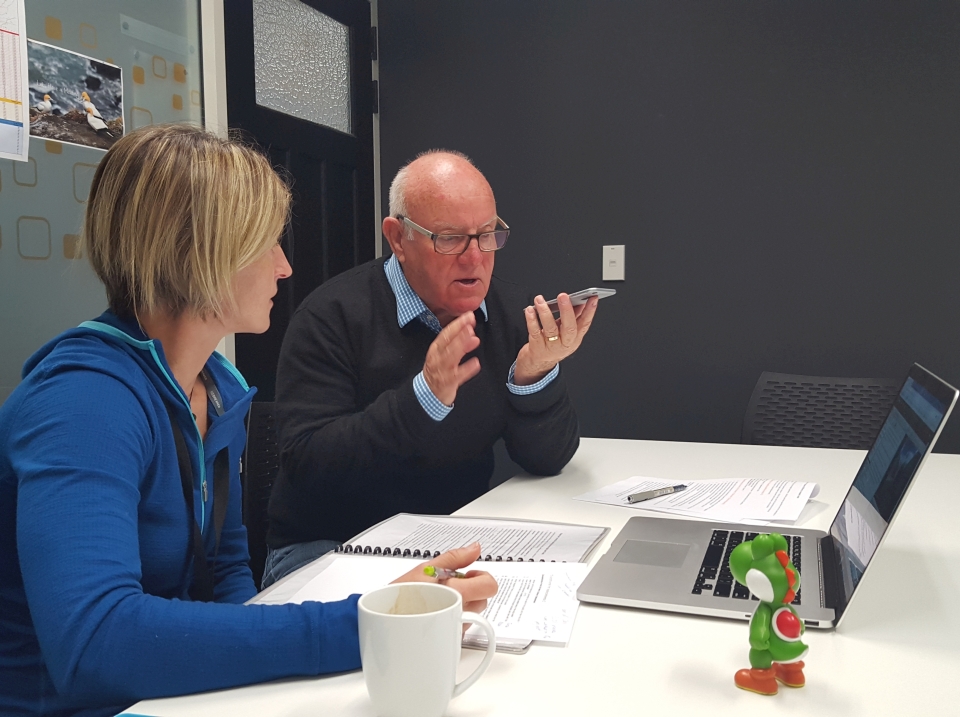
Ewart Barnsley answers a question from St Peter's School during the audioconference. Image: LEARNZ.
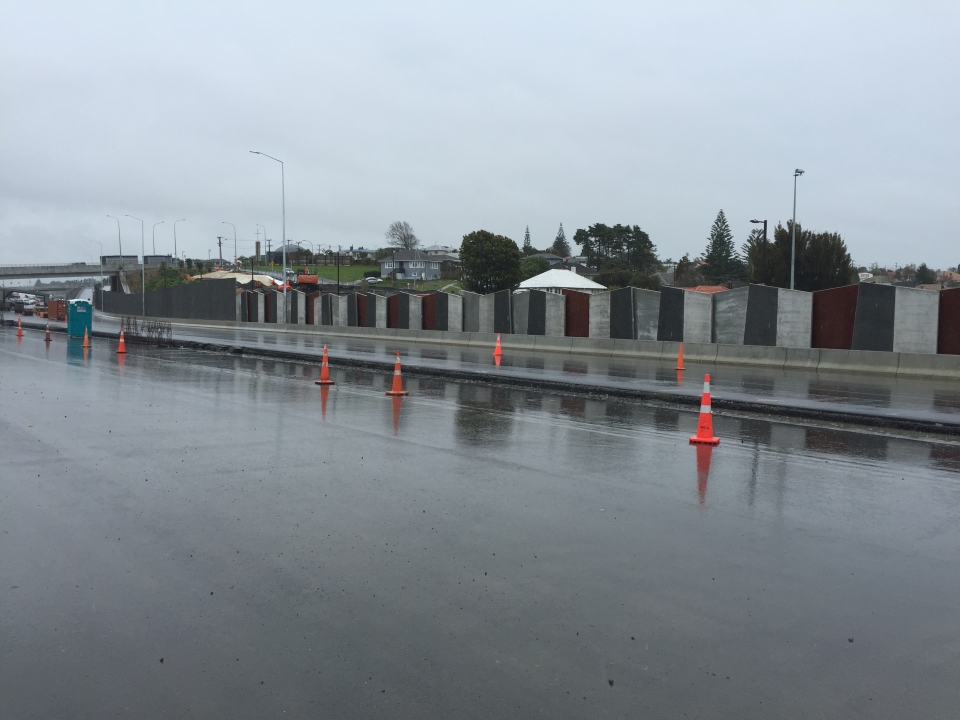
Looking out towards the noise walls on the Waterview Connection site. These walls will reduce the noise of the motorway for local residents. Image: LEARNZ.
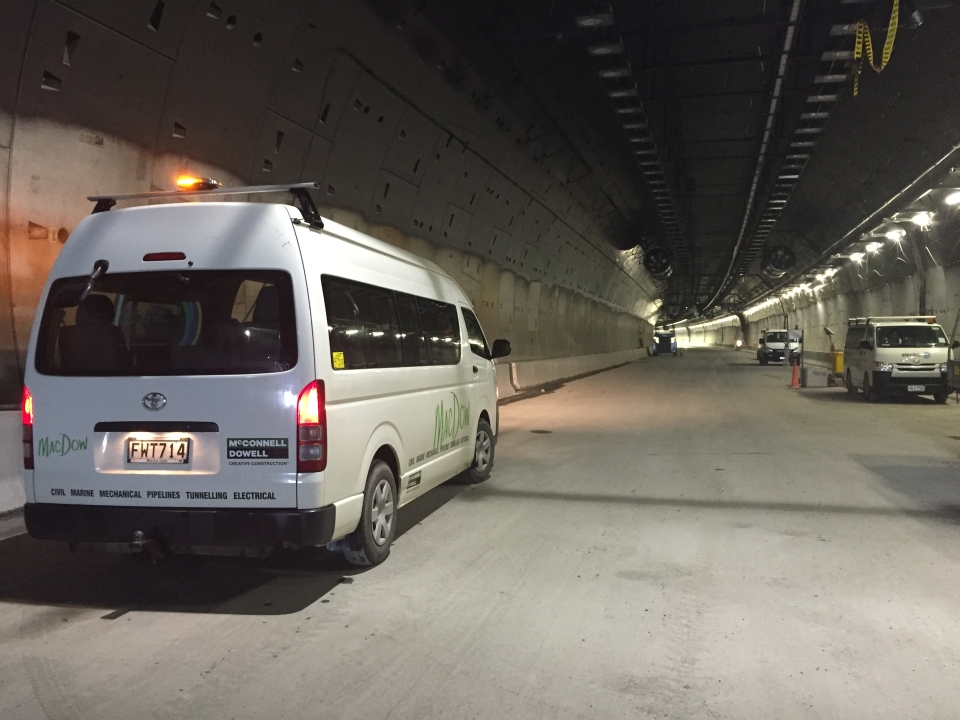
You were lucky enough to be one of the few people to drive all the way through the Waterview tunnel before it is opened to the public early next year. Image: LEARNZ.

You weren't able to drive out the northern end of the tunnel as work is still being done here. Image: LEARNZ.
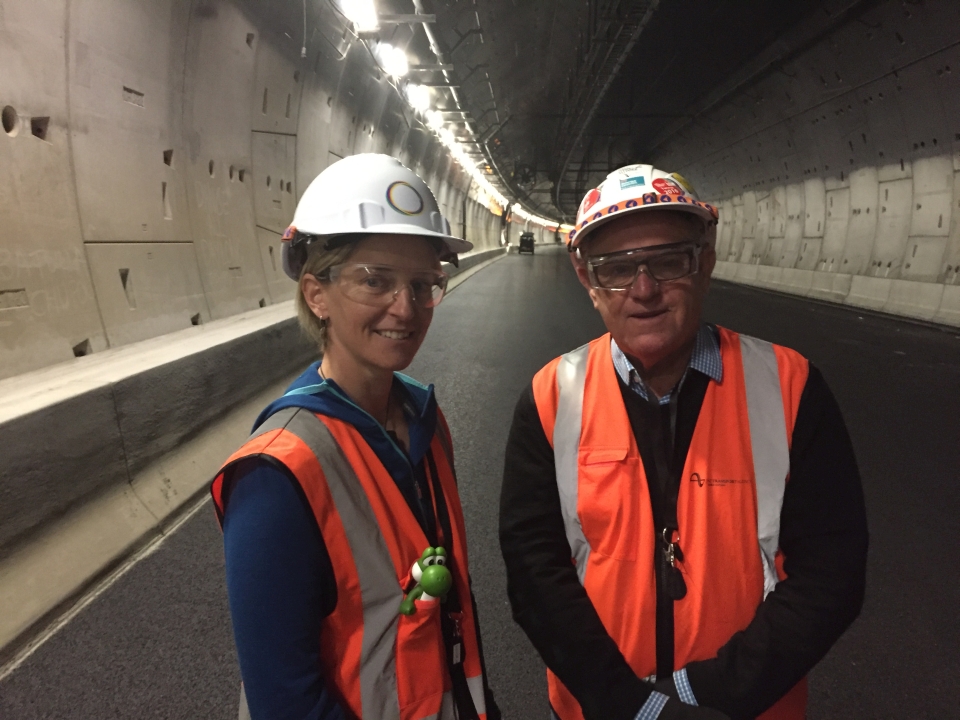
Ewart talks to Shelley about why the Waterview Connection was built. What benefits do you think the Waterview Connection will provide? Image: LEARNZ.
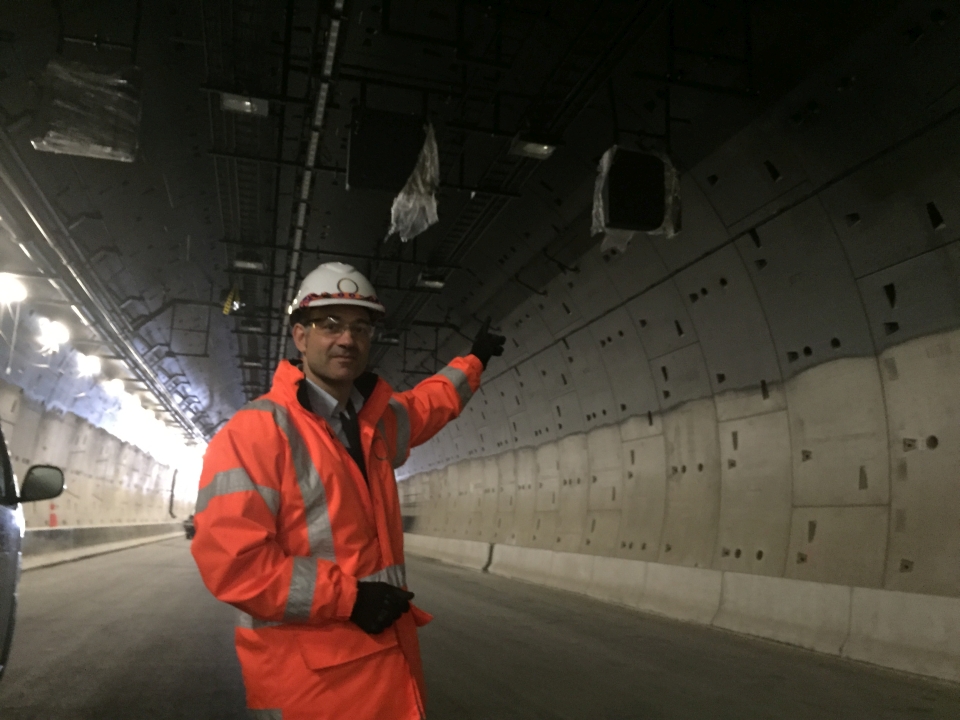
Emilio shows you where the electronic signs are in the tunnels. What will be displayed on these signs? Image: LEARNZ.

Workers prepare the walls of the tunnels for painting. What colour will the tunnel walls be? Image: LEARNZ.

Looking back at the Waterview Connection construction site. What have you learned during this field trip? Image: LEARNZ.